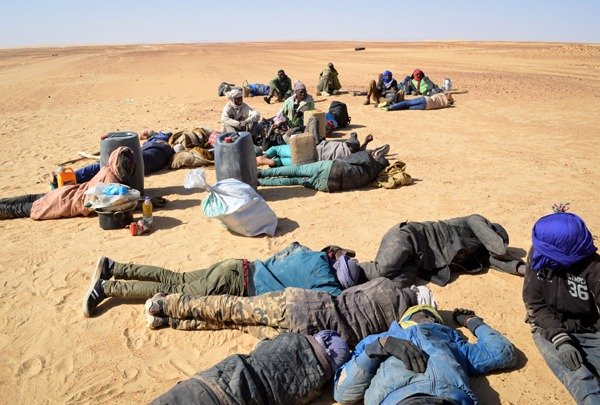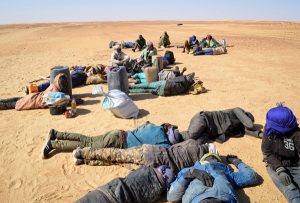

(Photo AFP)
By Alieu Ceesay
Over the years, many West African youth, including minors, have embarked on irregular journeys to Europe and other parts of the world in search of better life and livelihood. While many made it to their destinations, others lost their lives or are gone missing.
Through its Missing Migrants Project, the International Organisation for Migration (IOM) has, since 2014, been recording people who die in the process of migration towards an international destination, regardless of their legal status.
Under the Project, a ‘missing migrant’ is defined as a migrant who died at the external borders of states, or in the process of migration towards an international destination, regardless of their legal status. The Project records only those migrants who died during their journey to a country different from their country of residence.
The Project data includes the death of migrants who die in transportation accidents, shipwrecks, violent attacks, or due to medical complications during their journeys. It also includes the number of corpses found at the border crossings that are categorised as the bodies of migrants, based on their belongings and or the characteristics of the deaths. For instance, a death of an unidentified person might be included if the deceased were found without any identifying documentation in an area known to be on a migration route.
The data also includes deaths during migration which may be identified based on the cause of death, especially if it is related to trafficking, smuggling, or means of travel such as on top of a train, in the back of a cargo truck, as a stowaway on a plane, in unseaworthy boats, or crossing a border fence.
While the location and cause of death can provide strong evidence that an unidentified decedent should be included in Missing Migrants Project data, this should always be evaluated in conjunction with migration history and trends.
In view of the explanations above, IOM Missing Migrants Project has recorded the following statistics for West Africa from 2020 to 2022.
In 2020, more than 432 West African migrants lost their lives in their attempt to reach Europe. This represents the number of West Africans that died on their respective migration route, both the western, northern, eastern, and southern routes.
In 2021, the number increased to 1,146.
In 2022, as of November, the death rate has reduced to 205 nationals of West African migrants, although there are over 128 deaths whose nationalities are unknown.
According to the Project data, many deaths occur without any identification of those who died, and the long and hazardous overseas journey means that many disappearances at sea may occur without ever being documented.
Causes of deaths
The most common causes of death on the migratory routes recorded by the Missing Migrant Project are violence, sickness or lack of access to adequate healthcare, vehicle accidents or death linked to hazardous transportation, drowning, and environmental conditions, amongst others.
While it is not certain how many Gambians died along this irregular journey to Europe over the years, many Gambian migrants died trying to cross the Sahara Desert and the Mediterranean Sea to reach Europe.
Habibou Jammeh was one of them, as recounted by his elder brother, Sulayman Jammeh.
On Habibou’s first attempt to Europe, he was indeed successful as he reached Spain but was eventually returned back to The Gambia.
“Again, he took on the journey after some time here [in Gambia],” Sulayman said of his late brother’s second irregular journey to Europe.
“This time, when they took off the coast of Libya, their boat capsized and that was when we got the sad news that my brother was one of those that died.”
Sulayman said his late brother took on the irregular migration journey because of peer influence.
“He was a very ambitious and promising young man. He was a well-respected and responsible person,” Sulayman said.














